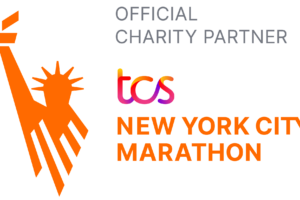Assembled and reviewed by Stephan Moll, MD University of North Carolina School of Medicine, Chapel Hill, NC
1. New Anticoagulants
Several new oral anticoagulants are in development. Five of them have progressed to phase 3 clinical trials (Dabigatran, Rivaroxaban, Apixaban, Edoxaban, Betrixaban). Two of them, Dabigatran and Rivaroxaban, are approved in a number of countries, not including the U.S., for VTE prevention after knee and hip replacement surgery. At ASH 2009, data from 2 large clinical trials on Dabigatran and Rivaroxaban were presented.
- Abstract #1: This large, 2,539 patient phase 3 trial on “Dabigatran in the Treatment of Venous Thromboembolism” (REMEDY trial) was appropriately deemed to be of such importance that it was one of 6 abstracts presented in the plenary session. On the same day, Dec 6th, it was published in the New England Journal of Medicine (Schulman S et al. NEJM 2009; pre-published on the web). The study showed that the anti-thrombin drug Dabigatran, given twice daily in a fixed dose (150 mg q 12 hours) and without anticoagulant blood monitoring, was equally effective and safe as warfarin in preventing venous thromboembolism recurrence. Liver function abnormalities were infrequent and occurred with similar frequency in both treatment groups. This study is noteworthy, as it is the first one of the new oral anticoagulant acute VTE treatment trials that is completed and provides data on how well one of the new oral anticoagulants performs in the treatment of an acute VTE. The September 17th, 2009 New England Journal of Medicine publication of the large phase 3 RELY trial, which compared Dabigatran and warfarin therapy in patients with trial fibrillation, had already shown us that Dabigatran is a safe and effective alternative to warfarin. The VTE trial presented now at ASH 2009 extends those data into the VTE treatment arena. These study results are a significant step forward on our path to get a warfarin alternative into clinical practice, that will make anticoagulant therapy easier for patients who need treatment for VTE (or atrial fibrillation).
- Abstract LBA-2: The so-called EINSTEIN-Extension trial randomized 1,197 patients who had had a previous VTE and had been treated with warfarin for several months into either Rivaroxaban (anti-Xa drug) 20 mg orally once daily, or placebo, and followed them for a mean of xxx days. In the placebo group xxx had a symptomatic VTE recurrence, whereas in the Rivaroxaban group only xx % did. This trial shows that Rivaroxaban, given orally and without need for anticoagulant monitoring is quite effective and safe in preventing recurrent VTE. As expected, Rivaroxaban led to a decrease in recurrent VTE. Noteworthy is that this reduction was quite pronounced (risk of recurrence in placebo arm 7.1 %; in Rivaroxaban arm 1.3 %), and that very few major bleeds occurred on Rivaroxaban (0.7 % in Rivaroxaban arm; none in placebo arm). These findings are quite exciting, as they indicate that long-term anticoagulation with a once daily oral anticoagulant without need for routine anticoagulant monitoring is an attractive treatment option for patients with a history of VTE who have a risk of recurrence if not on anticoagulants.
2. Unexplained pregnancy loss
- Abstract #489: This meta-analysis of LMWH use in women with unexplained pregnancy loss included 5 published trials and nicely summarizes what we know from randomized trials about the efficacy of LMWH in preventing further pregnancy losses in women with (2 trials) and without (3 trials) identifiable thrombophilias other than APLA syndrome. The authors conclude that there is a trend for increased birth rates when using LMWH. However, they also conclude that given the heterogeneity of the studies, that there is insufficient evidence that LMWH does, indeed, improve pregnancy outcomes in women with a history of pregnancy loss.
- Abstract #488: Women with a history of 2 or more unexplained pregnancy losses before gestational age 20 weeks were enrolled and randomized to receive either aspirin, aspirin together with prophylactic doses of a low molecular weight heparin (LMWH), or placebo. 95, 91, and 95 patients, respectively, were in each group. The live birth rate in the 3 groups did not differ, and was between 60 and 71 %. This study indicates that treatment with aspirin or aspirin plus LMWH is not useful in unselected women with 2 or more pregnancy losses. There were only 13-17 in each of the 3 treatment groups, too few to detect any statistically meaningful differences; however there was a trend to a higher live birth rate in the group treated with LMWH plus ASA, adding to the known few data that LMWH (± ASA) may be useful in increasing the live birth rate in women with unexplained pregnancy loss and known inherited thrombophilia. The data of the present study add to our understanding of treatment intervention in women with pregnancy loss from the previous studies, nicely summarized in ASH 2009 abstract # 489.
- Abstract # 2971: 737 women with recurrent unexplained pregnancy loss were retrospectively studied. Treatment with LMWH plus aspirin led to a higher rate of successful pregnancy in women with antiphospholipid antibodies than no treatment. However, LMWHG plus aspirin treatment did not increase the rate of successful pregnancy in other women with recurrent pregnancy loss.
3. Antiphospholipid Antibodies (APLA)
A number of causes for thrombosis in patients with APLA have been described. Two interesting abstracts investigating the causes of thrombosis in APLA syndrome were presented.
- Abstract # 147 showed that complement is involved in thrombosis in mice, by demonstrating that Complement 6 (C6) deficient mice injected with IgG APLA were protected from developing thrombosis. This raises the prospect that drugs that work as complement inhibitor could be effective in preventing thrombosis in APLA patients and might be worthwhile to study. Eculizumab is such a drug, directed against complement 5 (C5).
- Abstract # 146: In a very nice experiment it was shown that anti-b2-glycoprotein-I antibodies purified from a patient with APLA syndrome and infused into a mouse led to increased thrombus size observed by intravital microscopy. Infusion of immunoglobulins from the APLA patient depleted of anti-b2-glycoprotein-I antibodies did not lead to increased thrombus size. This experiment shows that anti-b2-glycoprotein-I antibodies are not just markers of an increased thrombosis risk, but that they are involved in the pathogenesis of thrombus formation. It will be very interesting and revealing to see how this experimental model performs, if other APLA are added, such as the ones that have, as of yet, no clearly defined clinical role in thrombus formation and are not part of the Sapporo criteria: antibodies against anticardiolipin IgA antibodies,anti- b2-glycoprotein-I IgA antibodies, antiphosphotidyl-serine, -ethanolamine, and –inositol antibodies.
4. Venous thromboembolism – risk factors, prophylaxis, treatment
- Abstract # 453: Obesity is a known risk factor for VTE (Pomp E et al, Br J Haematol 2007;139:289-296), but why that is, is not understood. It has been thought that it might be do to inactivity of the obese patient, or compression of pelvic veins from adipose tissue. The study presented as abstract 453 shows that (a) obese patients have higher factor VIII levels and (b) that the higher factor VIII levels lead to activated protein C resistance (APC resistance) and that (c) this is the cause of the increased VTE risk. Future studies need to show that the VTE risk associated with obesity can be decreased by weight loss.
- Abstract #1414 from Thailand shows that eating spicy food less than once a week almost doubles the risk for VTE.
- Abstract # 451: The HERDOO2 score is a tool to assess the risk of recurrent VTE in women after warfarin is stopped in patients with a first episode of unprovoked VTE. It is a composite of 4 factors: (a) degree of postthrombotic syndrome (HER = Hyperpigmentation, Edema, Redness), (b) D-dimer results, (c) Obesity (BMI > 30), and (d) Older age (> 65 years). High-risk women are those with a score ³ 2. This study showed a risk of recurrence of 9.9. % per year in men, 8.3 % in women with a HERDOO-2 score of ³2, and 1.3 % in women with a score < 2. The authors conclude that men and high-risk women with HERDOO-2 score of ³ 2 should be considered for long-term anticoagulation.
- Abstract # 452: It would be nice to have a simple web-based risk calculator for the risk of recurrent VTE based on patient characteristics entered, similar to what breast oncologists are doing at www.cancer.gov/bcrisktool. Abstract #452 showed that taking a few simple factors into consideration once can fairly accurately assess a patient’s risk of recurrence. The risk factors are: (a) gender, (b) distal versus proximal DVT versus PE, and (c) result of a D-dimer test.
5. Superficial thrombophlebitis
- Abstract #171: The current 2008 ACCP (American College of Chest Physicians) guidelines recommend that patients with symptomatic superficial thrombophlebitis receive at least 4 weeks of LMWH of unfractionated heparin (weak recommendation, moderate-quality evidence) or, as an alternative, warfarin (weak recommendation, low- or very-low-quality evidence). The very large double-blind so-called CALISTO trial presented in abstract 171 randomized 2,994 patients with superficial thrombophlebitis, but no DVT, into receiving either Fondaparinux 2.5 mg qd or placebo, for a treatment duration of 45 days. Fondaparinux was significantly more effective than placebo in preventing occurrence of DVT, PE and progression of superficial





